
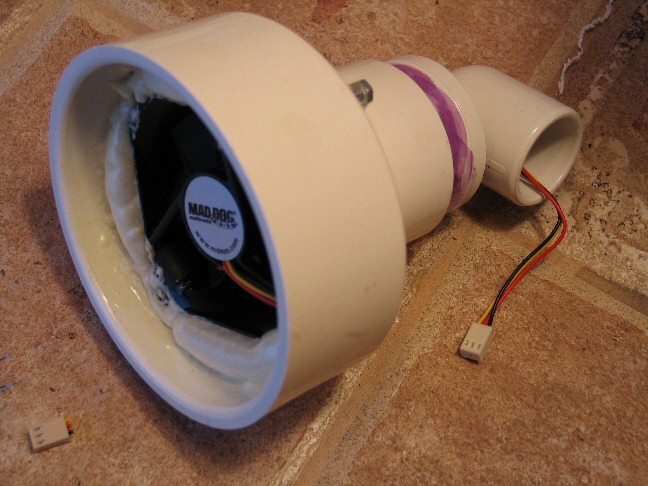
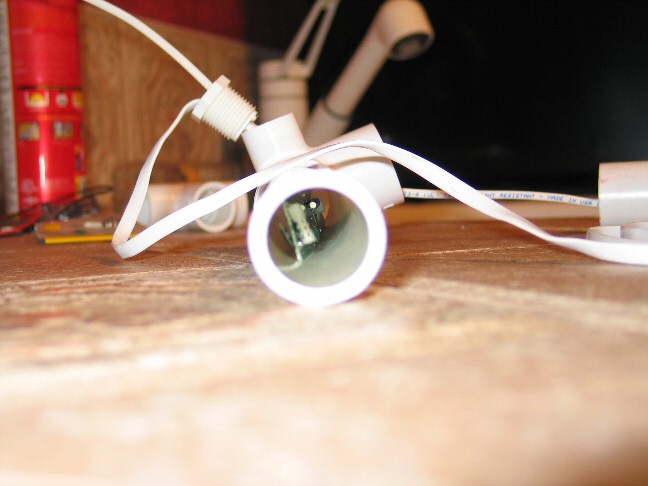
Recently I got a Oregon Scientific 968 Wireless Weather Station.
The first thing I did was start taking the sensors apart to see how I could improve their accuracy and precision.
The temperature sensor was the natural starting place for this.
I wanted a fan aspirated enclosure for the sensor. Frankly, I wasn't concerned about cabling the sensor, which added a lot of flexibility to my set-up. After reviewing several expensive professional grade fan aspirated temperature sensors, I decided on a pipe configuration for mine too.
I used a cheap computer CPU fan and mounted it inside a 4 to 2 inch PVC reducing coupler and got another PVC reducing flange to take the pipe diameter down to 1 inch. The actual temperature sensor from the 968 fits nicely inside a 1 inch PVC pipe. The fan is mounted so it blows out, thus drawing air from the outside in the other end and over the sensor.
To attach the fan, I screwed in some bolts to the outside of the PVC. This is probably not necessary as I sprayed some window insulation foam around the fan to seal of the air spaces around it. This foam is really adhesive and will likely hold the fan in place just fine.
To power the 12 volt fan, I got a cheap 12 volt 800 miliamp transformer from Radio Shack.
To my fan head, I attached about 2 feet of 1 inch PVC horizontally after a 90 degree connector and put on another 90 degree connector with a screw opening for cables to exit. Finally I attached a vertical 1 foot section to hold the sensor. After assembly, I spray painted the unit with a nice reflective epoxy white spray paint even though I think the regular white of the PVC would be just fine. (I did this after the picture I took below). I also got some plastc stay ties to secure the cables. The unit mounts really easily with standard mounting hardware of your choice.
The unit works beautifully and cost me about $40 including the transformer. I'm getting nice smooth temp curves on my graphs now. The little CPU fan really blasts (I forget the cubic feet per minute rating) and with my finger over the sensor end, I can really feel the air rushing in over the sensor. I think the key is to seal the spaces around the fan with foam so air can only get in the unit over the sensor. The unit also makes practically no noise.
The fan is a three wire connected fan. The yellow wire can be discarded as it is for some type of fan speed control on a computer. We want our fan to constantly crank. Connection from the transformer to the fan is pretty basic then. You do have to cut and strip the 12 volt adapter wire ends. I guess alternatively you could rig up some sort of adapter to the transformer's socket end, but why bother. There's very little current drop through 50 feet of thermostat wire that I got as a power cable to the unit.
Parts list:
Home Depot: 1 inch PVC pipe, 4to2 inch PVC reducing coupling, 2to1 inch PVC reducing flange, 90deg. PVC elbow, 90deg. elbow with screw opening, PVC glue, window insulation foam, 50 ft. thermostat wire, white spray paint.
Radio Shack: 12 volt 800 miliamp transformer
CompUSA: 80mm CPU fan
I figured a horizontal section of about 2.5 feet should be adequate for the exhaust from the fan to be far enough away from the temperature sensor as to not interfere with readings. I think probably that about one foot of horizontal length would be fine too and make the unit a little smaller. The temperature sensor is just suspended inside the vertical section of pipe about three inches up, and I made sure to plug the space around the exiting cables to prevent any air draw through this small opening. I may tweak the sensor suspension within the pipe to prevent any damage to the sensor or heat conduction through the PVC plastic to the circuit board and temperature sensor, but I think this is pretty minimal. Some professional style units, like at the link above, have a little shield over the vertical pipe housing the temp sensor. I didn't think this was needed as the airflow is pretty brisk, but I'd be open to that modification in future versions if I could figure out an easy way to do it.
The CPU fan is rated for a whole bunch of hours (again, I forget how many), but I may make another backup fan "head" to have in reserve when this one fails so I can do a quick change out. In fact, I didn't glue the horizontal connection to the fan head for this reason. The press fit is really tight though, so I'm not worried about it coming loose.
 |
 |
 |
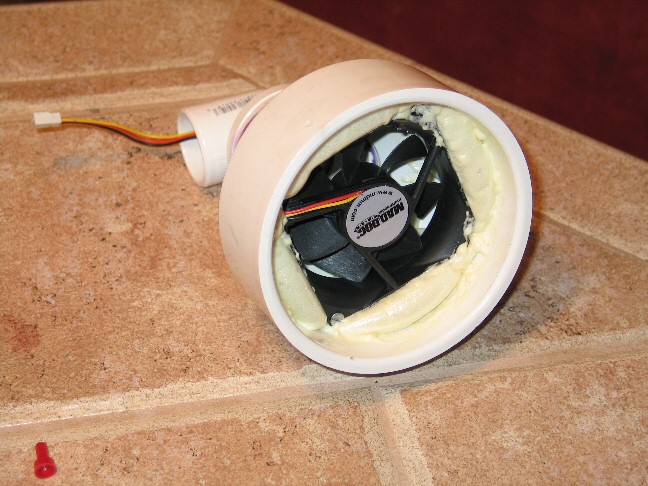 |
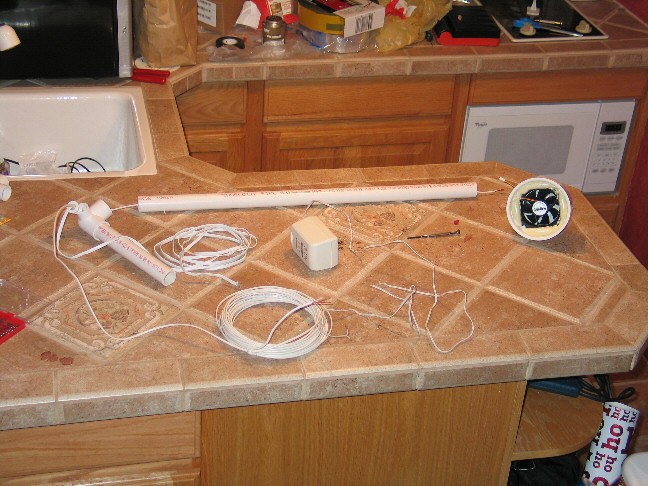 |
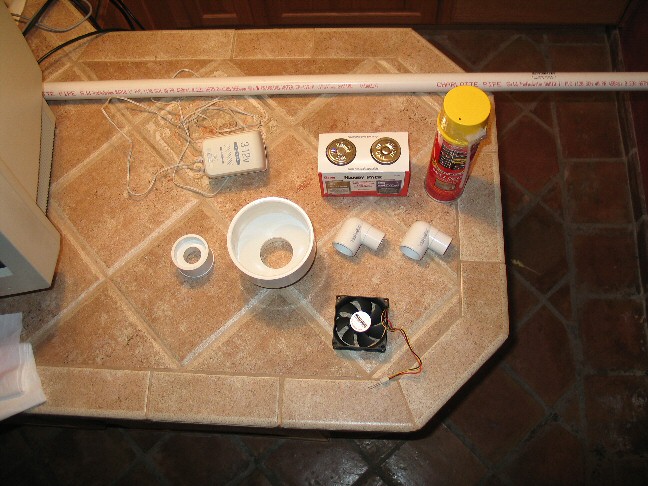 |
Please post any comments back on the Weather Matrix 968 Forum, or e-mail me at gartholson@yahoo.com
Also, learn more about heating the 968's rain gauge at this page.